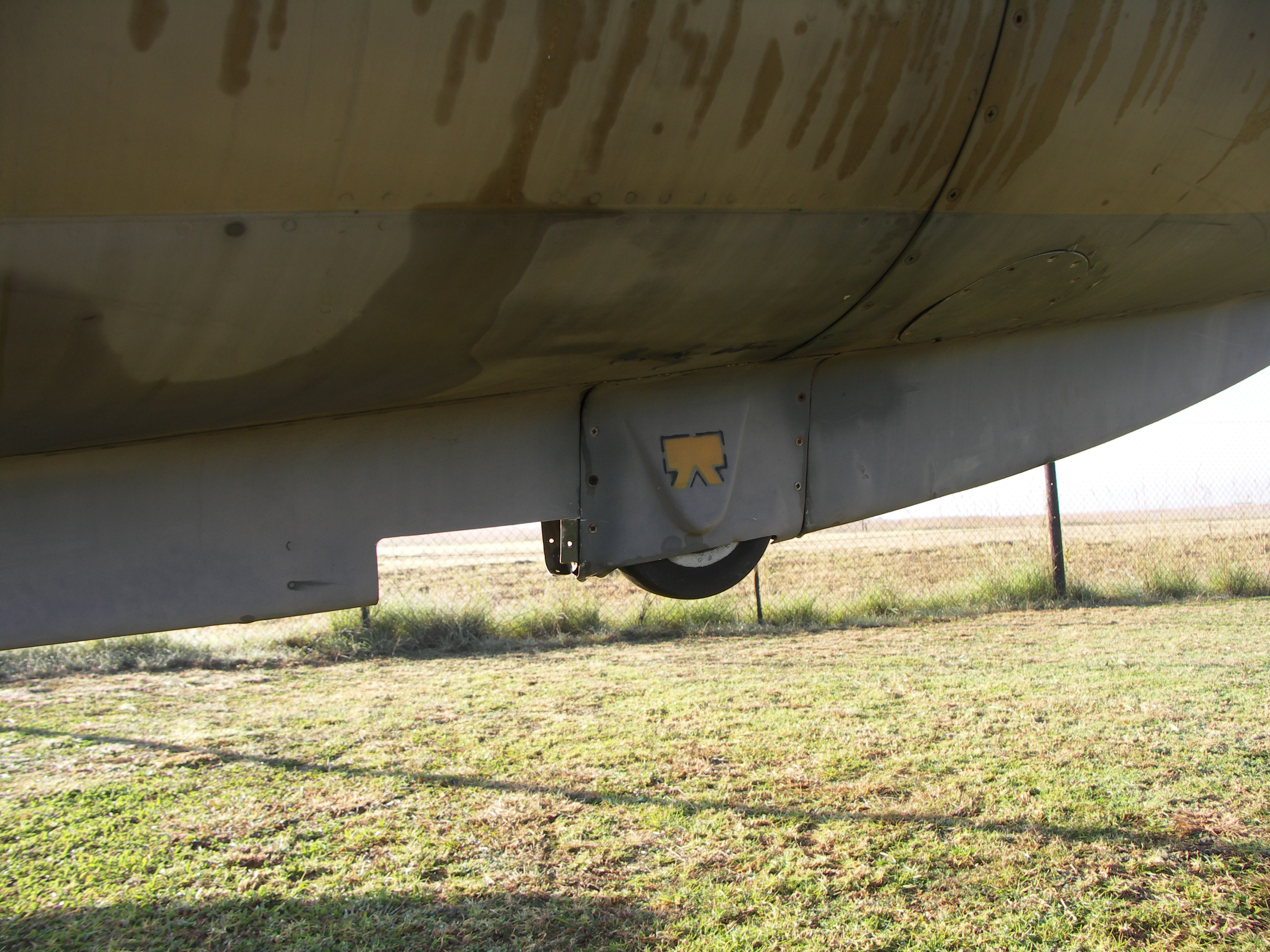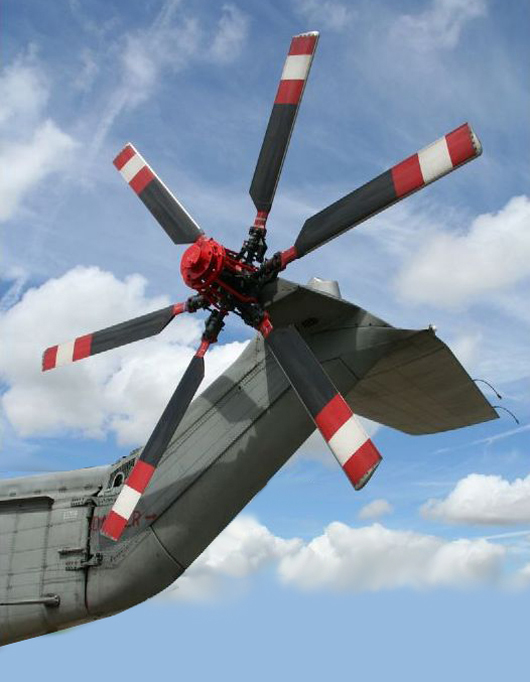|
Tail Strike
In aviation, a tailstrike or tail strike occurs when the tail or empennage of an aircraft strikes the ground or other stationary object. This can happen with a fixed-wing aircraft with tricycle undercarriage, in both takeoff where the pilot rotates the nose up too rapidly, or in landing where the pilot raises the nose too sharply during final approach, often in attempting to land too near the runway threshold. It can also happen during helicopter operations close to the ground, when the tail inadvertently strikes an obstacle. A minor tailstrike incident may not be dangerous in itself, but the aircraft may still be weakened and must be thoroughly inspected and repaired if a more disastrous accident is to be avoided later in its operating life. Protection measures Fixed-wing aircraft with a conventional tail and tricycle undercarriage are vulnerable to tailstrike. Those which require a high angle of attack on takeoff or landing are especially so. They may be fitted with a protecti ... [...More Info...] [...Related Items...] OR: [Wikipedia] [Google] [Baidu] |
Emirates Flight 407
Emirates Flight 407 was a scheduled international passenger flight operated by Emirates from Auckland to Dubai with a stopover in Melbourne, operated by an Airbus A340-500 aircraft. On 20 March 2009, the flight failed to take off properly at Melbourne Airport, hitting several structures at the end of the runway before climbing and then returning to the airport for a safe landing. Although no fatalities or injuries resulted, damage to the aircraft was severe enough for the event to be classified by Australian Transport Safety Bureau as an "accident". It was subsequently determined that a data-entry error resulted in insufficient engine thrust during take off. It has been described "as close as we have ever come to a major aviation catastrophe in Australia" by aviation officials. Chronology The scheduled flight departed from Melbourne as planned at 22:30 using runway 16, which was long. The captain ordered the first officer to rotate before the end of the runway, travelling at ... [...More Info...] [...Related Items...] OR: [Wikipedia] [Google] [Baidu] |
Wingstrike
Wingstrike is contact between an aircraft's wing and the ground during takeoff or landing, most often as a complication of a crosswind landing. Unexpected gusts of wind may cause an aircraft to roll to one side or the other during landing, whether they are performing a crosswind landing or not. However, crosswind landings have a much more complex dynamic relationship between the wind and the aircraft attitude. Because the wind is blowing across the runway, the aircraft has to either roll or yaw into the wind to be able to approach down the runway's centerline. As the aircraft transitions from descent to touchdown, the roll and/or yaw have to be countered to land smoothly and stay on the runway. This transition can cause upsets, particularly in gusting wind. Damage from wingstrike can range from replacement of wing surface skin areas at the wingtip, to structural damage throughout the wing due to overloads. Vulnerability The risk for wingstrike primarily depends on the angle o ... [...More Info...] [...Related Items...] OR: [Wikipedia] [Google] [Baidu] |
Vertical Stabilizer
A vertical stabilizer or tail fin is the static part of the vertical tail of an aircraft. The term is commonly applied to the assembly of both this fixed surface and one or more movable rudders hinged to it. Their role is to provide control, stability and trim in yaw (also known as directional or weathercock stability). It is part of the aircraft empennage, specifically of its Stabilizer (aeronautics), stabilizers. The vertical tail is typically mounted on top of the rear fuselage, with the horizontal stabilizers mounted on the side of the fuselage (a configuration termed "conventional tail"). Other configurations, such as T-tail or twin tail, are sometimes used instead. Vertical stabilizers have occasionally been used in Motorsport, motor sports, with for example in Le Mans Prototype, Le Mans Prototype racing. Function Principle The vertical tail of an aircraft typically consists of a fixed vertical stabilizer or fin on which a movable rudder is mounted. A trim tab may s ... [...More Info...] [...Related Items...] OR: [Wikipedia] [Google] [Baidu] |
Helicopter
A helicopter is a type of rotorcraft in which Lift (force), lift and thrust are supplied by horizontally spinning Helicopter rotor, rotors. This allows the helicopter to VTOL, take off and land vertically, to hover (helicopter), hover, and to fly forward, backward and laterally. These attributes allow helicopters to be used in congested or isolated areas where fixed-wing aircraft and many forms of short take-off and landing (STOL) or short take-off and vertical landing (STOVL) aircraft cannot perform without a runway. The Focke-Wulf Fw 61 was the first successful, practical, and fully controllable helicopter in 1936, while in 1942, the Sikorsky R-4 became the first helicopter to reach full-scale mass production, production. Starting in 1939 and through 1943, Igor Sikorsky worked on the development of the Vought-Sikorsky VS-300, VS-300, which over four iterations, became the basis for modern helicopters with a single main rotor and a single tail rotor. Although most earlier ... [...More Info...] [...Related Items...] OR: [Wikipedia] [Google] [Baidu] |
Tail Rotor
The tail rotor is a smaller rotor mounted vertically or near-vertically at the tail of a traditional single-rotor helicopter, where it rotates to generate a propeller-like horizontal thrust in the same direction as the main rotor's rotation. The tail rotor's position and distance from the helicopter's center of mass allow it to develop enough thrust leverage to counter the reactional torque exerted on the fuselage by the spinning of the main rotor. Without the tail rotor or other anti-torque mechanisms (e.g. NOTAR), the helicopter would be constantly spinning in the opposite direction of the main rotor when flying. Tail rotors are simpler than main rotors since they require only collective changes in pitch to vary thrust. The pitch of the tail rotor blades is adjustable by the pilot via the anti-torque pedals, which also provide directional control by allowing the pilot to rotate the helicopter around its vertical axis. Its drive system consists of a shaft powered from ... [...More Info...] [...Related Items...] OR: [Wikipedia] [Google] [Baidu] |
AgustaWestland AW139
The AgustaWestland AW139, now known as the Leonardo AW139, is a 15-seat medium-sized twin-engined helicopter developed and produced by the Italian helicopter manufacturer AgustaWestland, now part of Leonardo. It is marketed at several different roles, including VIP/corporate transport, military use, offshore transport, firefighting, law enforcement, search and rescue, emergency medical service, disaster relief, and maritime patrol."US Corporate Operator Signs Contract For Two AW139 Helicopters." ''AgustaWestland'', 18 June 2014. The AW139 was designed jointly by the Italian helicopter manufacturer Agusta and the American company [...More Info...] [...Related Items...] OR: [Wikipedia] [Google] [Baidu] |
Air Transport International Flight 782
Air Transport International Flight 782 was a ferry flight from Kansas City International Airport in Missouri to Westover Metropolitan Airport in Springfield, Massachusetts using a Douglas DC-8-63 with one of its 4 engines inoperative. On February 16, 1995, the aircraft failed to take off from Kansas City, overran the runway, and crashed. All three flight crew members, the only occupants on board, were killed.Copy at Embry–Riddle Aeronautical University. The cause was deemed to be improper training, which resulted in the crew failing to understand a three-engine takeoff procedure. In addition, the Federal Aviation Administration (FAA)'s oversight of rest regulations and the airline were both poor. Aircraft and crew Th ...[...More Info...] [...Related Items...] OR: [Wikipedia] [Google] [Baidu] |
Air India Express Flight 611
Air India Express is an Indian low-cost airline and a wholly-owned subsidiary of Air India. It is headquartered in Gurgaon, Haryana, India. The airline operates more than 2000 flights per week to 45 destinations across India, the Middle East and Southeast Asia. It has operating bases in Bengaluru, Delhi, Hyderabad, Kannur International Airport, Kannur, Cochin International Airport, Kochi, Netaji Subhas Chandra Bose International Airport, Kolkata, Calicut International Airport, Kozhikode, Mangalore International Airport, Mangaluru, Chhatrapati Shivaji Maharaj International Airport, Mumbai, Thiruvananthapuram International Airport, Thiruvananthapuram and Tiruchirappalli International Airport, Tiruchirappalli. History Foundation Air India Express was inaugurated on 29 April 2005 with the launch of three flights that took off simultaneously from Thiruvananthapuram, Kochi and Kozhikode. The airline was launched as a low-cost carrier with the objective of providing convenient conn ... [...More Info...] [...Related Items...] OR: [Wikipedia] [Google] [Baidu] |
Middle East Airlines Flight 304
Metrojet Flight 9268 was an international chartered passenger flight operated by Russian airline Kogalymavia (branded as Metrojet). On 31 October 2015, at 06:13 local time EST (04:13 UTC), the Airbus A321-231 operating the flight exploded above the northern Sinai Peninsula following its departure from Sharm El Sheikh International Airport, Egypt, en route to Pulkovo Airport, Saint Petersburg, Russia. All 224 passengers and crew on board died. The cause of the crash was most likely an onboard explosive device as concluded by Russian investigators. Most of the people aboard the flight were tourists. The passengers comprised 212 Russians, four Ukrainians, and one Belarusian. There were also seven crew members on board, all of whom were Russian. Investigators believe that a bomb was put on the aircraft at Sharm El Sheikh, with the goal of causing airlines to suspend flights to that airport. Shortly after the crash, the Islamic State's Sinai Branch (IS-SP), previously known as ... [...More Info...] [...Related Items...] OR: [Wikipedia] [Google] [Baidu] |
China Airlines Flight 611
China Airlines Flight 611 was a regularly scheduled international passenger flight from Chiang Kai-shek International Airport (now Taoyuan International Airport) in Taiwan to Hong Kong International Airport in Hong Kong. On 25 May 2002, the Boeing 747-209B operating the route disintegrated midair and crashed into the Taiwan Strait, northeast of the Penghu Islands, 20 minutes after takeoff, killing all 225 people on board. The in-flight break-up was caused by metal fatigue cracks resulting from improper repairs after a tailstrike to the aircraft 22 years earlier. This accident is similar to Japan Air Lines Flight 123 which killed 520 people. The crash remains the deadliest in Taiwan, as well as the most recent accident with fatalities involving China Airlines, and the second-deadliest accident in China Airlines history, behind China Airlines Flight 140 with 264 fatalities. Aircraft The aircraft involved, registered as , (originally registered as B-1866), MSN 21843, ... [...More Info...] [...Related Items...] OR: [Wikipedia] [Google] [Baidu] |
Japan Air Lines Flight 123
Japan Air Lines Flight 123 was a scheduled domestic passenger flight from Tokyo to Osaka, Japan. On August12, 1985, the Boeing 747 flying the route suffered a severe structural failure and explosive decompression 12 minutes after takeoff. After flying under minimum control for 32 minutes, the plane crashed in the area of Mount Takamagahara, 100kilometres () from Tokyo. The aircraft, featuring a high-density seating configuration, was carrying 524people. The crash killed all 15crew members and 505 of the 509 passengers on board, leaving only four survivors. An estimated 20 to 50 passengers survived the initial crash but died from their injuries while awaiting rescue. The crash is the list of aircraft accidents and incidents resulting in at least 50 fatalities, deadliest single-aircraft accident in aviation history and remains the deadliest aviation incident in Japan. Japan's Aircraft Accident Investigation Commission (AAIC), assisted by the U.S. National Transportation Safety Boar ... [...More Info...] [...Related Items...] OR: [Wikipedia] [Google] [Baidu] |





